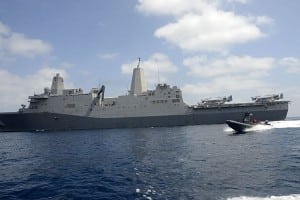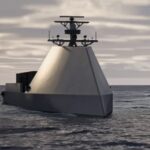
Using the hull for the San Antonio-class (LPD-17) amphibious transport dock ship to replace the Navy’s older fleet of amphibious LSD landing dock ships remains a possibility but is “off the table” at the current price, the chief of Naval Sea Systems Command (NAVSEA) said Thursday. Vice Adm. William Hilarides told a small group of reporters that the LPD hull is too expensive to fit the role required for the landing dock ship mission, and that the design would have…













